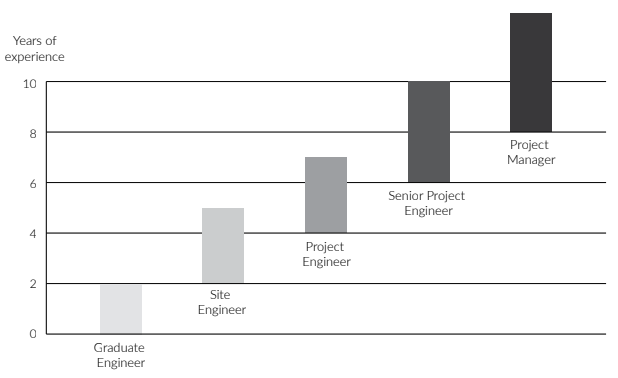The construction sector is key to Australia’s economic growth. A new Construction Engineering Area of Practice will equip engineers with the resources, Chartered credentials and networking opportunities to raise the bar across the sector.
When the Sydney Metro City & Southwest Tunnel and Station Excavation (TSE) Works was announced as the winner of the 2022 Australian Construction Achievement Award overnight it set the delivery bar high for the construction industry.
“John Holland, CPB Contractors and Ghella Joint Venture have given a masterclass in using innovative engineering solutions and teamwork to overcome the most complex environmental and logistical challenges imaginable,” said Engineers Australia CEO Dr Bronwyn Evans AM.
That complex environment included challenging geotechnical conditions, mining under heritage buildings and working alongside live transport infrastructure. The project has become a gold star for construction excellence and heralds the timely announcement of Engineers Australia’s industry first Construction Engineering Area of Practice (AoP).
Introducing the Construction Engineering Area of Practice
The Australian Constructors Association (ACA) has been leading the charge for an AoP, working closely with Engineers Australia since 2020 in the lead up to the launch. It is this collaborative effort over the past two years that sets the Construction Engineering AoP apart from others according to Engineers Australia’s Chief Engineer Jane MacMaster FIEAust CPEng.
“[This AoP] has brought together a lot of hard working people, which has culminated in an Area of Practice that’s really well supported. One of the key products that’s come out of that has been the Construction Engineering Learning and Development Guide,” said MacMaster.
“It is an important document that explains what a career in construction engineering can look like, and the competencies and capabilities that you would typically need to develop throughout the course of your career.”
Similar to other sectors in engineering, the construction industry is staring down the barrel of an engineer shortage. But according to MacMaster the Construction Engineering AoP will address this by helping engineers find their home in the sector and showcase a clear career path.
“Once you start practising in the field, engineers usually tend to identify with that area of practice that they’re actually working in rather than the traditional field that they studied in,” said MacMaster, who talking from experience identifies more as a career aerospace and systems design engineer than a mechanical engineer, her area of study.

Benefits of the Area of Practice
With the construction industry generating over $360 billion in revenue and a projected annual growth rate of 2.4% in the next five years, the construction sector is key to Australia’s economic success. The formation of the Construction Engineering AoP will help drive that success by lifting the standards of practice in the sector. “If a greater proportion of your engineers are Chartered in construction engineering that is a way to distinguish yourself from other engineering organisations who don’t have a Chartered workforce,” MacMaster pointed out.
It is also a valuable addition to construction engineers’ toolkit and credentials.
“It’ll enable construction engineers to have their competence in construction engineering be recognised. That’s important for the community. It’s important for the sector itself, and it’s important for engineers and engineering organisations to distinguish themselves as highly competitive in their field,” she said.
“The other really important part of being Chartered is the support that you get from being part of that AoP. There are the networking opportunities and the resources that become available to you from being a Chartered Engineer.”
For construction engineers who want to be involved in the advancement of the construction industry in Australia, the new AoP will provide members with the opportunity to be part of a construction community of professionals that promotes peer review, mentoring and advocacy for policies that meet the demands of the sector.




Excellent step to recognise a critical, essential, engineering function and profession, long overdue.
Construction engineering, also referred to as erection design, is an essential requirement for prefabricated concrete construction and mandated in AS 3850 since 2015. The latest part of AS 3850 includes minimum professional requirements, experience and competency and extends the scope to include building and civil construction work.
I don’t understand the graph “years of experience”. Further on it talks about competency (which it should). Specifying time I.e. years of experience is discriminatory. An engineer demonstrating the required competence should be allocated to the position irrespective of time.
Yes it can be a guide but axis should read typical or guide on experience.
EAust must recognise firstly that state regulations play out very differently for doing construction based engineering work. We don’t have an education system from universities that even teach this. What we see is that state regulators do not have seamless licensing across the areas of construction and experience is restrictive, depending if you are a sole practitioner, small business or large firm.
Will the EAust use peer review and interview program in this scheme to rank and verify the individuals skills here?
What is the aim of the scheme when we have CPEng. We need a tiered credentials system yes, but we need to push for national accreditation schemes first, and one construction legislative process in all states and lower and fair insurance PI costs. Most of us have been on this treadmill for 15 years for change. Don’t need a distraction from the main goal and this needs to be an EAust federal election “Must Have” policy.
Fantastic article!!!